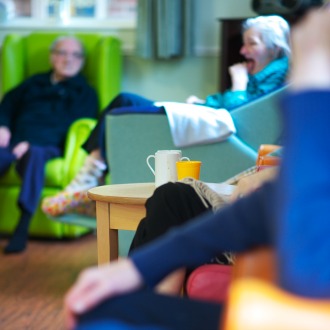Dilemma: Care home too demanding

Go straight to the proprietor, or them report to the CQC

Although there is often some friction in the relationship between general practices and care homes, this degree of dissonance is worrying, and may be a warning that all is not well at the home.
Are there any other concerns? For example, is medication being appropriately ordered, or is requesting chaotic and last minute? Do staff at the home take appropriate responsibility for the care of residents?
Often there is some fault on both sides so start by taking a conciliatory tone and looking dispassionately at the problem to make sure the practice is not at least in part to blame. If you are satisfied that it is not, your next move should be to take the problem higher.
If it is an independent home, ask to see the proprietor or if it is part of a larger chain arrange an appointment with the area manager. If this seems daunting, you can ask for help. If you are part of a GP federation, that may carry more weight than the practice alone or your LMC may be prepared to take on the task.
In the end, as providers of GP services you can only have limited influence. There is a good argument that the home is in breach of the requirement of its CQC registration to meet Outcome Six, which is ‘co-operation with other providers’.
If you are unable to resolve the matter, you should contact the CQC and pass on your concerns to them.
Dr Harry Yoxall is a GP in Somerset and medical secretary of Somerset LMC
Make a case to the CCG that you need support

First of all, negotiate with the care home and a GP should initially at least check all requests for visits. The care home should provide transport to bring patients to the surgery if the patient is mobile and where the patient will get better care in a well-equipped primary care centre.
If this does not resolve the situation, the practice should contact their CCG to see if it is possible for the CCG to offer some support either through providing transport or through setting up a service to help support the practice. In our area, we have a number of schemes which we are piloting: paying GPs for step up/step down beds in the homes, or providing Advanced Nurse Practitioners to visit the homes. In one area we have contracted with our acute trust to provide nurse practitioners to offer extra support to the homes.
The practice could also report the situation to their local authority as they hold the contract with the care home and can see if any pressure can be put on the home to educate the staff and to make sure they act in a reasonable and responsible way.
If the practices are to go down this route, they will need evidence that the home has resulted in an excessive workload and will need to start collecting data. They should also look at national data as there is some evidence that nursing home services which are provided over and above normal primary care will result in fewer hospital referrals, fewer A&E referrals and fewer emergency admissions. Overall, this may encourage the CCG to get involved as they should see a QIPP saving as a result of putting in an enhanced service.
At present, there is no mechanism through GMS or PMS to increase the funding available to primary care to take on those patients. This is something that NHS England should tackle and perhaps the £5 per head available for accountable GPs in the future might go some way towards reimbursing GPs for this extra workload.
Dr Stewart Findlay is a GP in Bishop Auckland and chief clinical officer at Durham Dales Easington and Sedgefield CCG.
Seek a compromise, such as asking patients’ families to take them to hospital

An increasingly complex and aged population together with the increasingly inexperienced staff employed in care homes mixed with a risk averse culture leads to higher healthcare usage. Our contract states that services required by registered patients should be ‘delivered in the manner determined by the practice in discussion with the patient’.
Collaboration and constructive working relations are key. The practice should meet with the key medical lead for the care home to engender mutual understanding of working conditions and constraints on both sides. Working together could allow mutually workable solutions.
The practice could ask for visit requests to be coordinated by one senior member of care home staff, agree a fixed day or time that visits will happen to control workload and agree that a staff member is available to attend the doctor to action any agreed outcomes. The practice should seek to develop with the home an understanding of the benefits for both sides of the patients travelling in. There are both benefits to time efficiency and patients’ interests, with better assessment facilities and access to patient records allowing safer care in the surgery environment.
On the other hand recognising the home’s difficulties in getting certain patients to the surgery may lead to other solutions such as using family members to help with transport or agreeing that the doctor may see a group of patients at the care home.
The practice could also engage with the CCG to seek a LES with admission reduction as an aim. With ultimate stalemate the practice can insist that mobile patients attend if appropriate.
Dr Laura Edwards is a GP in Locks Heath, near Southampton and medical director of Wessex LMCs.
Pulse July survey
Take our July 2025 survey to potentially win £1.000 worth of tokens

Visit Pulse Reference for details on 140 symptoms, including easily searchable symptoms and categories, offering you a free platform to check symptoms and receive potential diagnoses during consultations.










